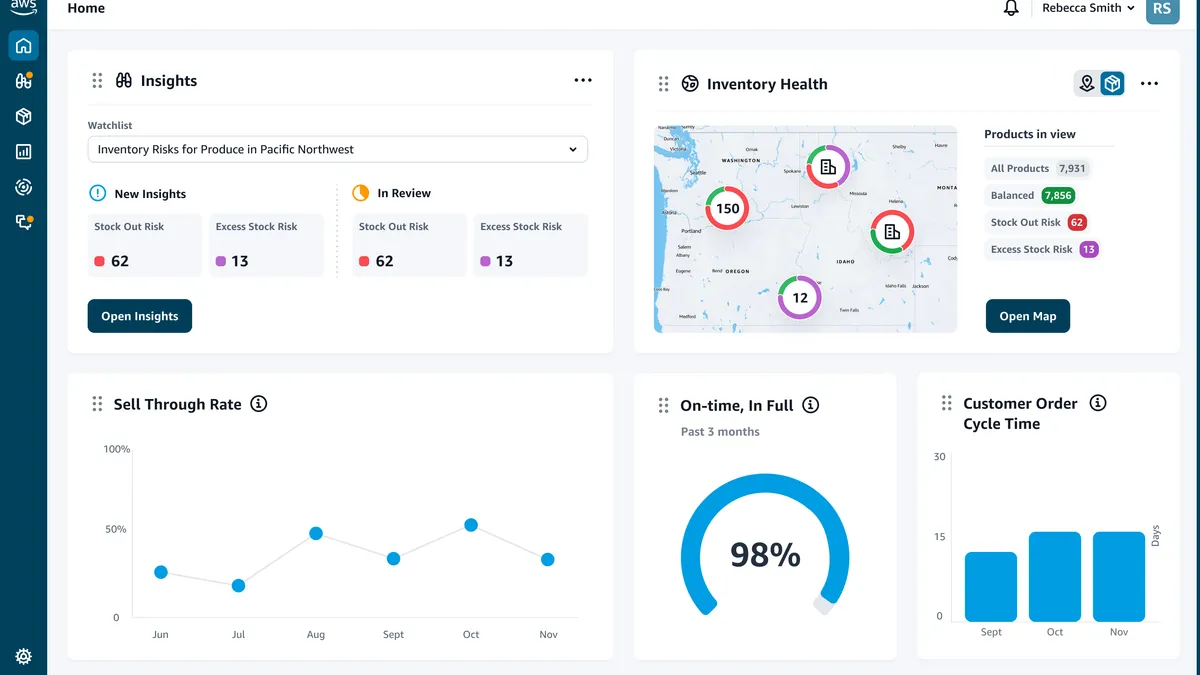Dive Brief:
- Amazon Web Services launched a new cloud application last month, aimed at increasing supply chain visibility and helping users respond to changing market conditions, the company announced in a Nov. 29 press release.
- The pay-as-you-go system allows users to pool their data from across systems into a centralized “supply chain data lake” that governs, translates and stores data in real time.
- The AWS system is now available in preview in Northern Virginia, Oregon, and Frankfurt, Germany, with additional availability “coming soon,” according to the release. Lifetime Brands, Traeger Grills and Whole Foods are among those using the new platform.
Dive Insight:
AWS’ new application aims to help customers better understand their supply chain and make accurate decisions based on real-time information so they can mitigate risk, lower costs, reduce errors and provide flexibility, said VP of AWS Supply Chain Diego Pantoja-Navajas.
AWS Supply Chain, which is available to users outside of Amazon and AWS, can be used by a variety of industries, such as retail, CPG, automotive, healthcare and energy, Pantoja-Navajas told Supply Chain Dive.
“We want to be able to provide our customers tools that are really powered by machine learning to understand what is happening with their supply chain, how [to] be able to visualize issues that are going to affect them today, not yesterday,” he said. “A lot of the issues that supply chains have is that they’re making their decisions based on yesterday’s information, not [based on] real-time information that you need to be able to make the right decision.”
AWS Supply Chain automatically syncs with outside applications and systems, Pantoja-Navajas said. By doing so, the system aims to reduce the challenges that companies experience when managing disjointed supply chains.
Applications include existing enterprise resource planning, supply chain planning and execution solutions, procurement applications, POS and more, he added.
The information is presented to the user in a single format, which can be translated to provide needed insights or other benefits the application offers, he added.
“Our application doesn’t require you to migrate or move to AWS and leave the existing systems that are working for you,” Pantoja-Navajas said. “We basically see it as an overlay that acts as a system to unify information across all these disparate systems so we can add value to each of them, and we can harmonize data across all of them.”














